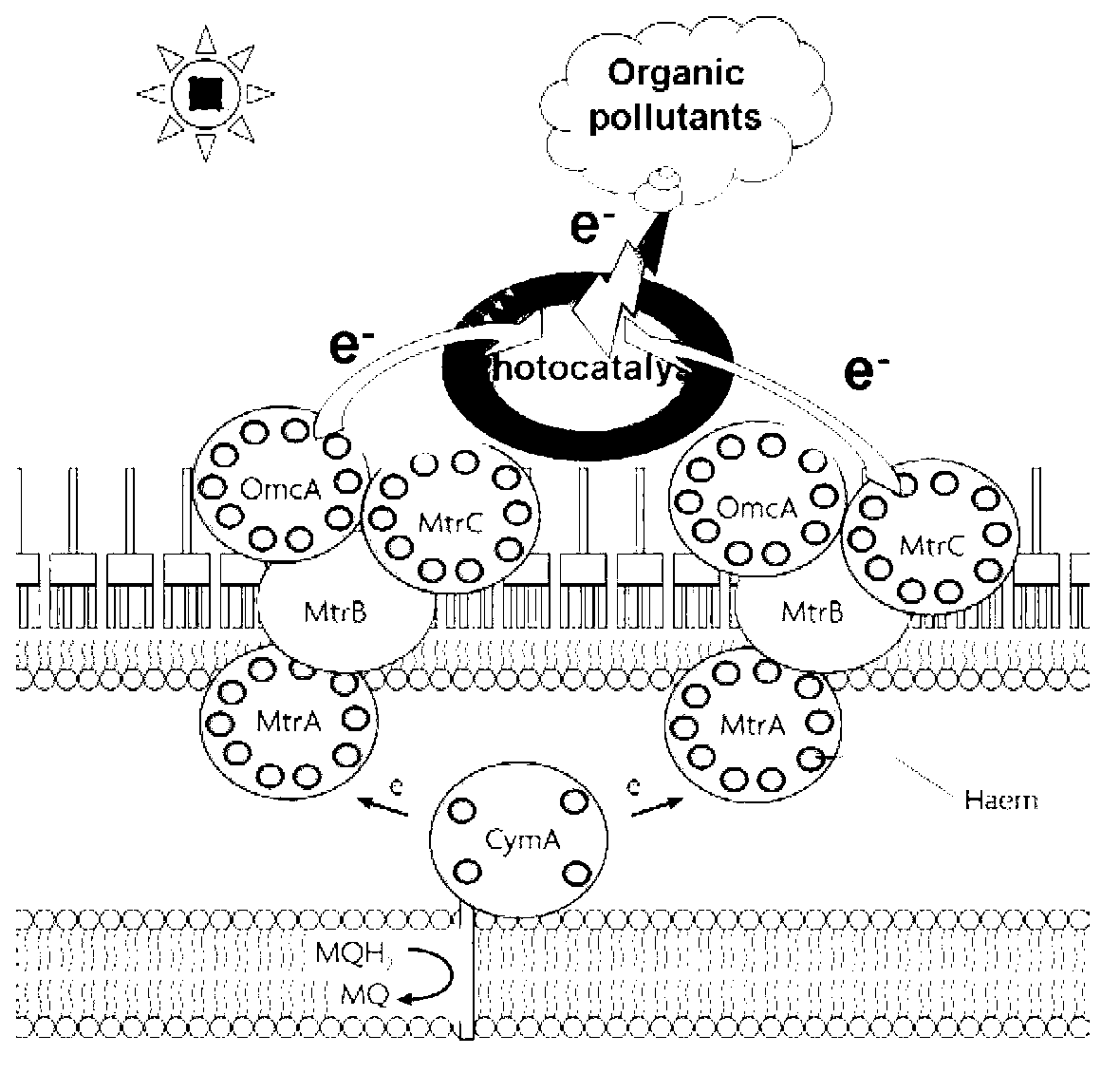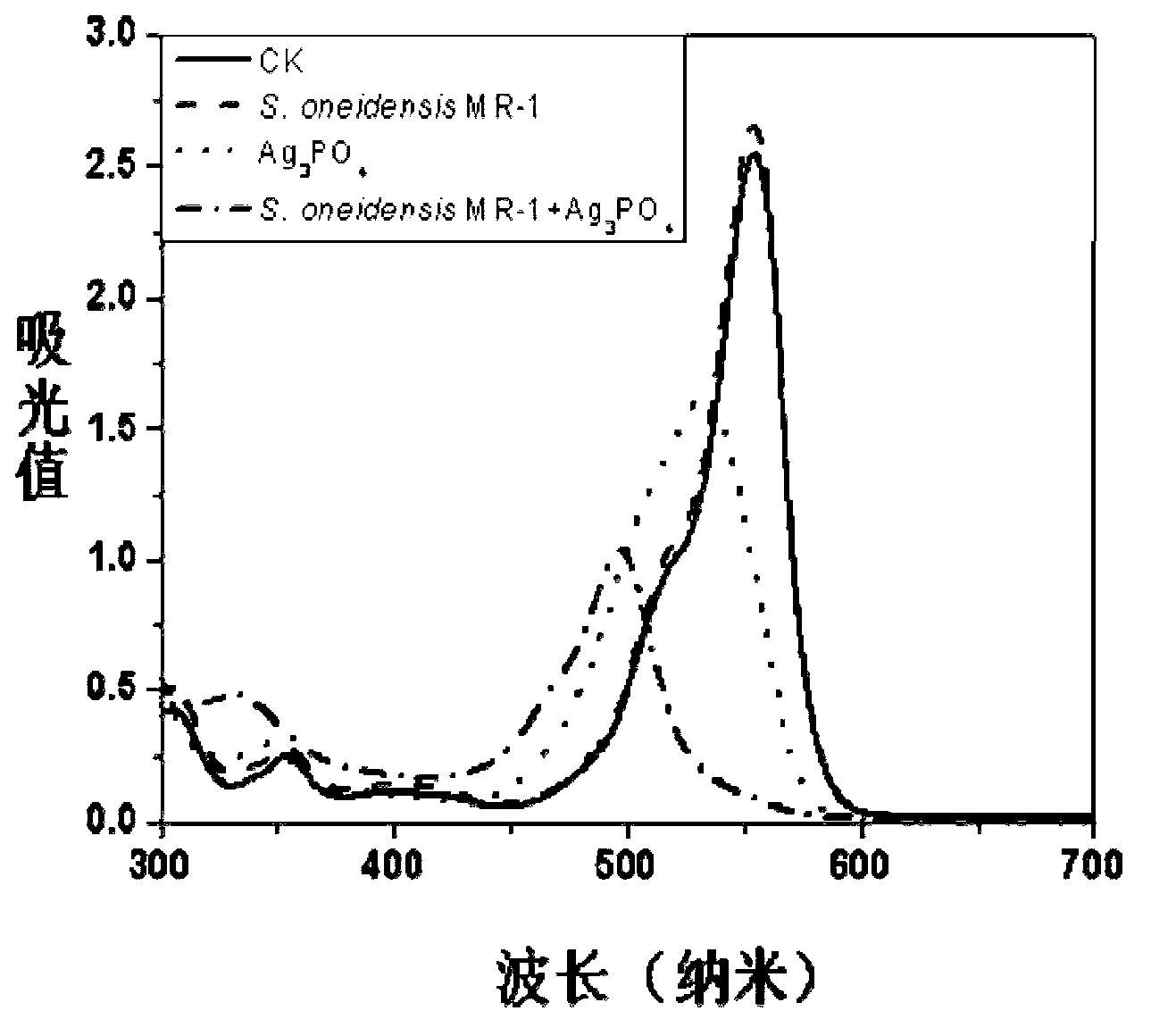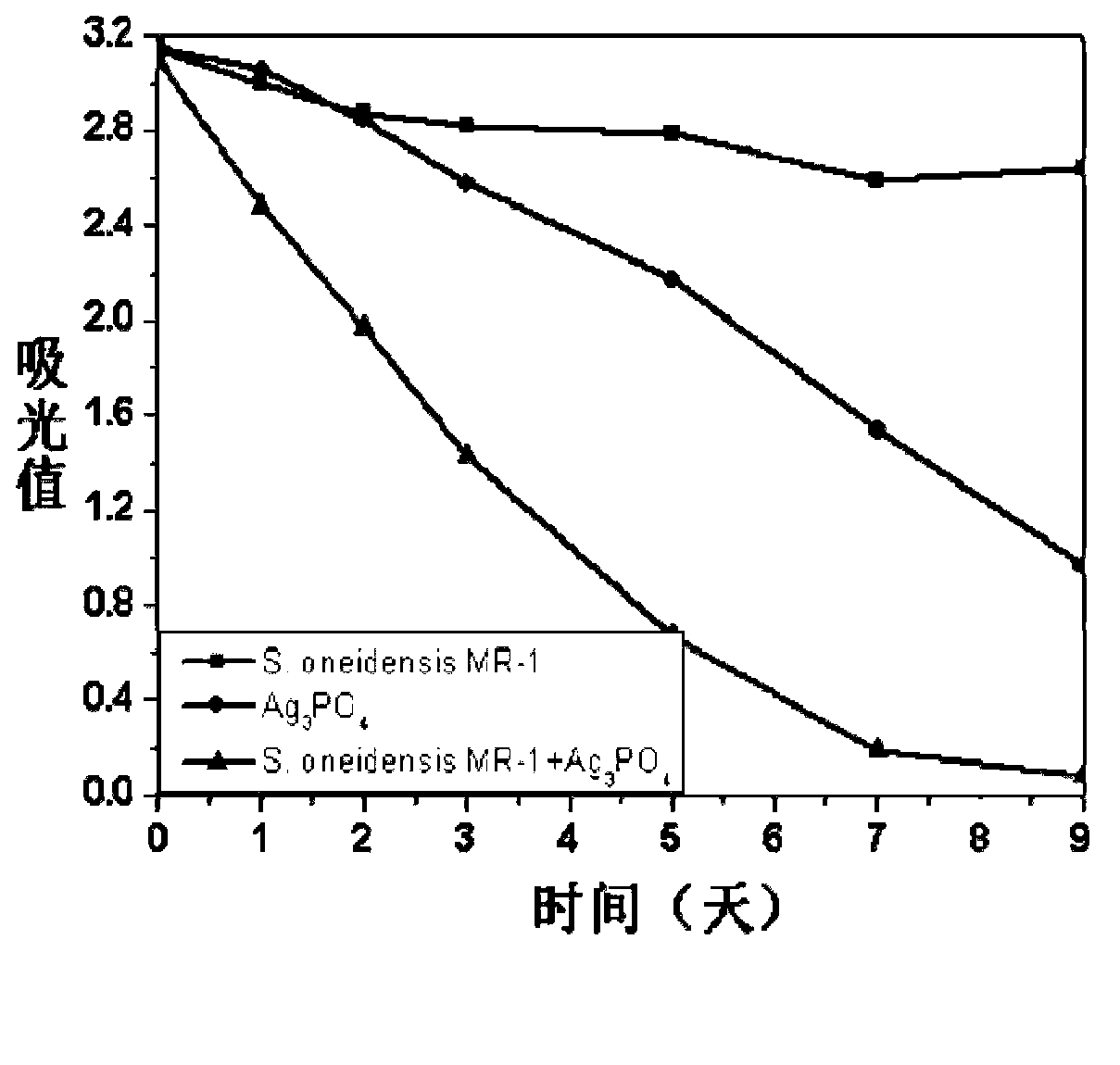Method for degrading organic pollutant through nanometer material photo-reduction and assisted by electricigens
A technology for generating electricity from microorganisms and organic pollutants, which is applied in the fields of sewage or sludge treatment, water, and wastewater. It can solve the problems of low degradation ability of refractory pollutants and achieve the effect of improving the repair ability
- Summary
- Abstract
- Description
- Claims
- Application Information
AI Technical Summary
Problems solved by technology
Method used
Image
Examples
Embodiment Construction
[0027] The thallus S.oneidensis MR-1 of the present invention is a model of electrogenic microorganisms (Genome sequence of the dissimilatory metal ion–reducing bacterium Shewanella oneidensis.Nature Biotechnology.2002,20:1118-1123), developed by Nielsen University of California, USA Presented by the professor; the strain is preserved in the American Type Type Collection Center (ATCC), and the strain number is ATCC 700550 TM . This strain can be purchased directly from the center. The photoreduction nanomaterial used is silver phosphate nanoparticle; the degradation dye used is rhodamine B.
[0028] (1) Streak S.oneidensis MR-1 preserved in glycerol on LB plates and culture overnight at 30°C;
[0029] (2) Pick the activated single colony with a toothpick, inoculate it in 50ml of LB liquid medium, shake it at 30°C and 200rpm to the logarithmic phase, take the logarithmic phase bacterial liquid, centrifuge at 5000rpm for 15min, remove the supernatant, and use S. oneidensis MR...
PUM
 Login to View More
Login to View More Abstract
Description
Claims
Application Information
 Login to View More
Login to View More - R&D
- Intellectual Property
- Life Sciences
- Materials
- Tech Scout
- Unparalleled Data Quality
- Higher Quality Content
- 60% Fewer Hallucinations
Browse by: Latest US Patents, China's latest patents, Technical Efficacy Thesaurus, Application Domain, Technology Topic, Popular Technical Reports.
© 2025 PatSnap. All rights reserved.Legal|Privacy policy|Modern Slavery Act Transparency Statement|Sitemap|About US| Contact US: help@patsnap.com



